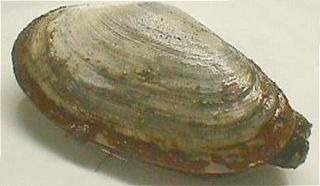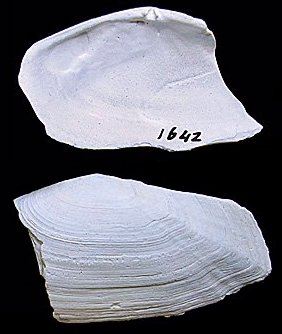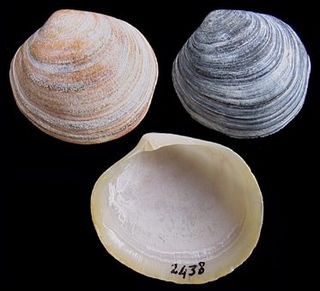
Caenogastropoda is a taxonomic subclass of molluscs in the class Gastropoda. It is a large diverse group which are mostly sea snails and other marine gastropod mollusks, but also includes some freshwater snails and some land snails. The subclass is the most diverse and ecologically successful of the gastropods.

The Arcida is an extant order of bivalve molluscs. This order dates back to the lower Ordovician period. They are distinguished from related groups, such as the mussels, by having a straight hinge to the shells, and the adductor muscles being of equal size. The duplivincular ligament, taxodont dentition, and a shell microstructure consisting of the outer crossed lamellar and inner complex crossed lamellar layers are defining characters of this order.

Heteroconchia is a taxonomic infraclass of diverse bivalve molluscs, belonging to the subclass Autobranchia.

Myida is an order of saltwater and freshwater clams, marine and freshwater bivalve molluscs in the subclass Heterodonta. The order includes such bivalves as soft-shell clams, geoducks and shipworms.

The Psammobiidae, or sunset clams, are a family of medium-sized saltwater clams, marine bivalve molluscs of the order Cardiida.

Mactridae, common name the trough shells or duck clams, is a family of saltwater clams, marine bivalve mollusks in the order Venerida.

Nacellidae is a taxonomic family of sea snails or true limpets, marine gastropod molluscs in the subclass Patellogastropoda.

Anomalodesmata is an superorder of saltwater clams, marine bivalve molluscs. This grouping was formerly recognised as a taxonomic subclass. It is called a superorder in the current World Register of Marine Species, despite having no orders, to parallel it with sister taxon Imparidentia, which does have orders.

Carditidae is a family of marine bivalve clams of the order Carditida, which was long included in the Venerida. They are the type taxon of the superfamily Carditoidea.

Vesicomyidae is a family of saltwater clams, marine bivalve molluscs in the superfamily Glossoidea.

Ungulinidae is a family of marine bivalve molluscs in the order Venerida.

Lottiidae is a family of sea snails, specifically true limpets, marine gastropod mollusks in the superfamily Lottioidea and the clade Patellogastropoda.
The World Register of Marine Species (WoRMS) is a taxonomic database that aims to provide an authoritative and comprehensive list of names of marine organisms.

Vetigastropoda is a major taxonomic group of sea snails, marine gastropod mollusks that form a very ancient lineage. Taxonomically the Vetigastropoda are sometimes treated as an order, although they are treated as an unranked clade in Bouchet and Rocroi, 2005.
Winston Frank Ponder is a malacologist born and educated in New Zealand who has named and described many marine and freshwater animals, especially micromolluscs.

Freshwater molluscs are those members of the Phylum Mollusca which live in freshwater habitats, both lotic such as rivers, streams, canals, springs, and cave streams and lentic such as lakes, ponds, and ditches.

Cardioidea is a taxonomic superfamily of saltwater clams, marine bivalve molluscs consisting of the extant Cardiidae (cockles) and the extinct Pterocardiidae.

Tellinoidea is a taxonomic superfamily of saltwater clams, marine bivalve molluscs in the order Cardiida.
Cetoconcha is the only extant genus of saltwater clams in the family Cetoconchidae.

Carditida is an order of marine bivalve clams.
















